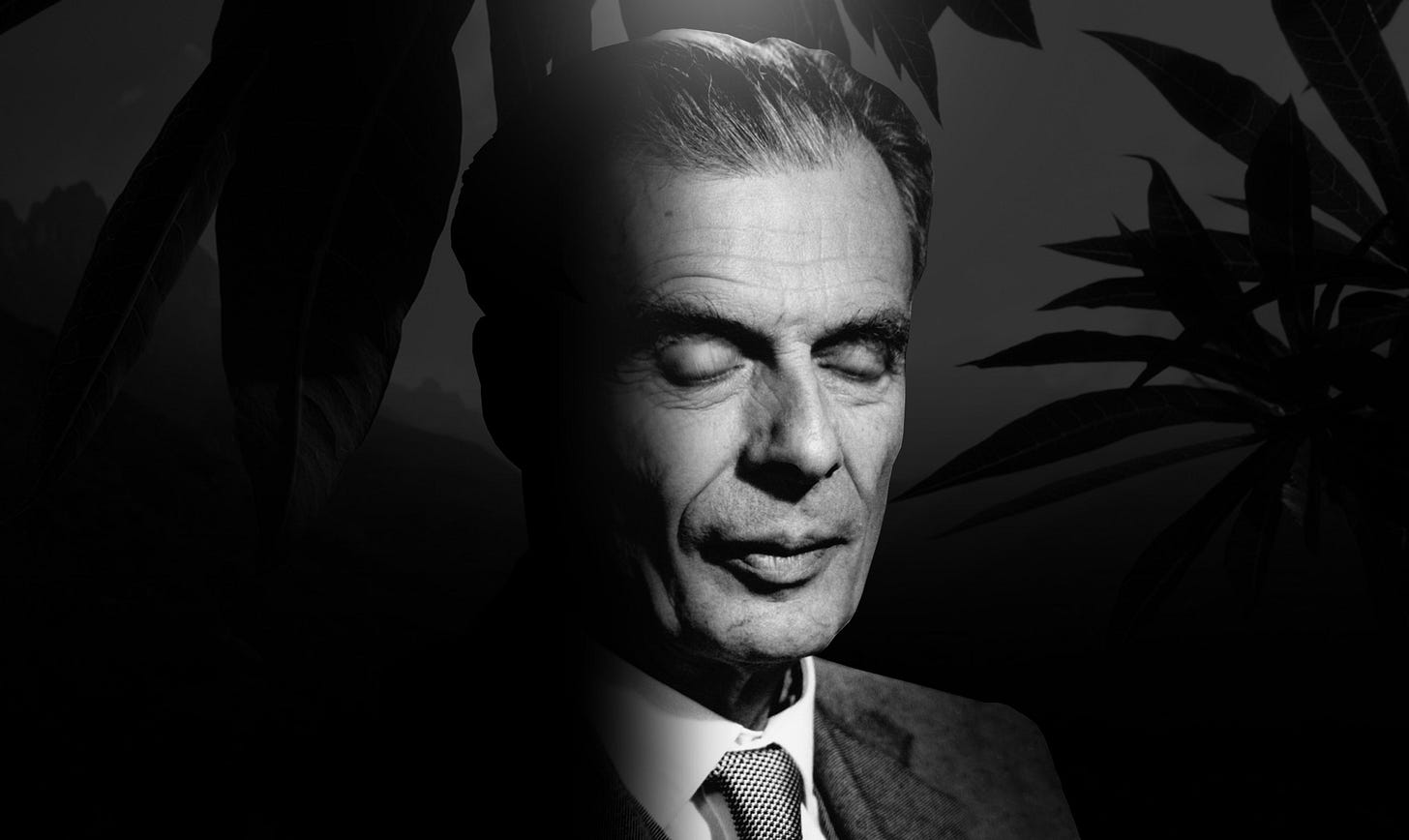At Home with Moksha
or, tripping in the ebb of time
Upon delving back into Aldous Huxley’s novel Island (1962), I was repeatedly reminded of a Herman Hesse quote. ‘One never reaches home,’ he wrote. ‘But where paths that have affinity for each other intersect the whole world looks like home for a time.’
Island is deeply riddled with the notion of nostos, the voyage home, but like Hesse there is no final arrival, no Homeric return to Ithaca. One’s home potentially being in every present yet ever-passing moment, I realized, lies at the heart of Huxley’s story—just as it lies at the heart of every psychedelic trip.
Hestia, Greek Goddess of hearth and home, kept the fire burning whatever mischief the other gods were away making. It was permanent, yet—as is the nature of fire—also transient. This is the quandary Huxley so beautifully explores. In Island, home is equivalent to the present, it is shifting, elusive but permanently bound to the conditions of past and future.
The question then that Huxley explores throughou…


